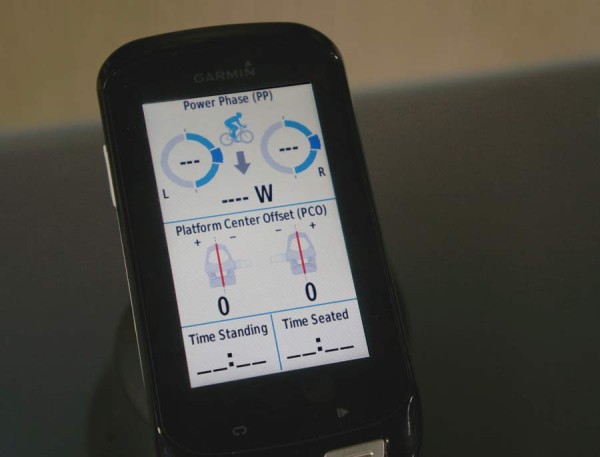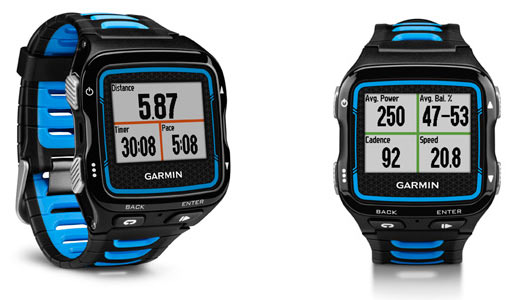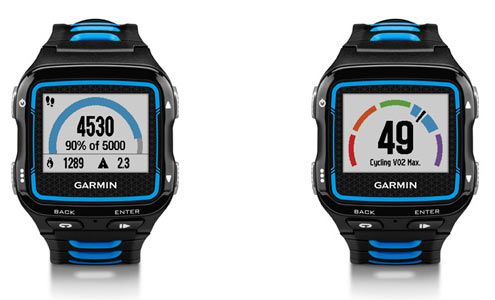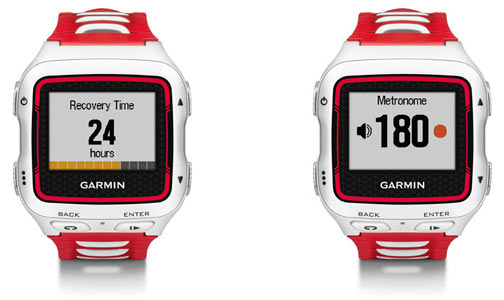At Eurobike we saw the new single-sided Garmin Vector S power meter pedal option, which tweaked the left sensor’s system to send a doubled up signal to the head unit and approximate total power for both legs from a single meter at about half the price.
At Interbike, they showed us the new Cycling Dynamics updated for the Vector and their cycling computers. The new screen interprets data from the pedals in a new way, showing your Power Phase (how strong you are at each point in the crank’s rotation), compare time spent seated versus standing and see how your power is hitting the pedals with their Platform Center Offset reading.
All three metrics will appear on a single screen and show up in Garmin Connect upon syncing the device with your computer after the ride. A software update will be available later this year for both the pedals and Garmin’s head units to bring it all to life…
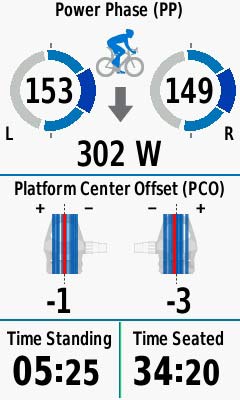 The Power Phase section shows the angles where you start and stop generating positive torque. They say you can use it to analyze the differences saddle position can make, and see how your output differs when seated or standing, climbing or riding on the flats. Of course, you’ll need the standard dual sided Vector pedal system to see right and left.
The Power Phase section shows the angles where you start and stop generating positive torque. They say you can use it to analyze the differences saddle position can make, and see how your output differs when seated or standing, climbing or riding on the flats. Of course, you’ll need the standard dual sided Vector pedal system to see right and left.
The Platform Center Offset shows how much of your power is being pushed to either side of the pedal’s center. This data can be used to improve bike fit and cleat position to improve efficiency and possibly prevent injury.
Lastly, it automatically figures out when your seated or standing and records the total time for each. Post ride, you can compare power output with the riding position to see which is more efficient, all in real time along your ride’s continuum. It’ll also show the corresponding cadence and speed, so you’ll know for sure whether it’s better to sit and grind or get up and chammy dance!
NEW GARMIN FORERUNNER 920XT
Building off the 910XT, its successor adds running dynamics and smartphone connectivity, plus a hi-res color display, while keeping the GPS and other basic metrics we’ve all come to expect.
The hot new features include daily activity tracking, VO2 max estimate for cyclists, and notifications of incoming text, emails, calls, calendar reminders and more when paired with your Bluetooth 4.0 smartphone. It’ll automatically upload your workout data to Garmin Connect via that Bluetooth connection or over WiFi. It can even do live tracking
For cyclists, the cool feature is it’s ability to use heart rate and power output to estimate your VO2 max, giving you another metric by which to gauge your performance. It also bundles in a sleep tracking and recovery timeline, which we all know we need more of. A built in altimeter provides accurate altitude measurements, too.
The meat of the new features are for runners, though. Their Advanced Running Dynamics measure cadence, vertical oscillation (how far you bounce off the ground between steps) and ground contact time. It then presents this data in full color graphics and compares it to runners in general. Assuming you want to change your gait, a metronome will vibrate/beep to help you match a specific cadence. An UltraTrac mode boosts GPS tracking up to 40 continuous hours for ultra runners.
Swimmers get stroke type, stroke counts and distance. If you’re looking for an all in one package, the new Forerunner 920XT seems to check the boxes active (or those who want to be active) people are looking for. Bonus: It’s thinner and lighter than previous models, too. Retail is $449 on its own, or $499 with BT heart rate strap.
